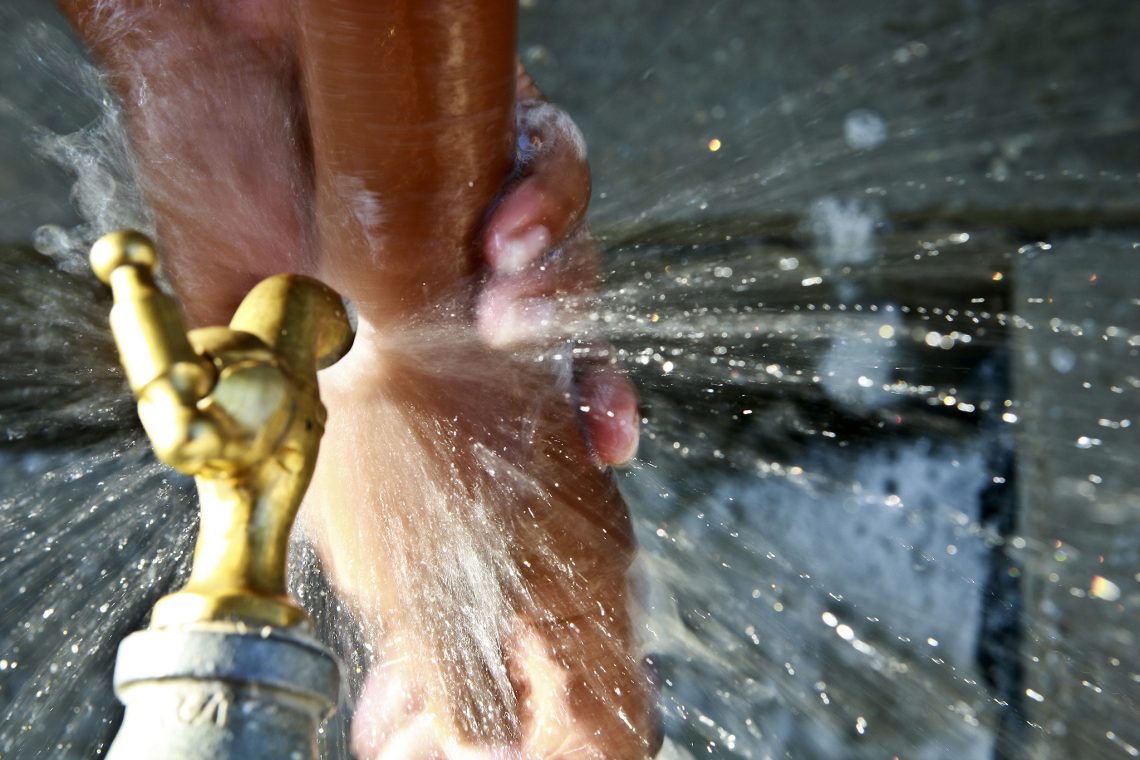The rise of resistant bacteria poses a global threat that could lead to the simplest of injuries and illnesses becoming life threatening and routine medical procedures becoming too high-risk to perform. From 18–24 of November, global attention turned to antimicrobial resistance (AMR) with World Antibiotic Awareness Week (WAAW), an initiative of the World Health Organization (WHO). The focus of this year’s campaign is “the future of antibiotics depends on all of us”. This sentiment is not only critical to building awareness and engaging change in individuals, but also to open awareness of the underlying causes of AMR and the failures so far in addressing them first.
Addressing AMR remains a multifaceted challenge, as the pillars of WHO’s AMR Global Action Plan reflect. However, what is often overlooked is reducing the need to use antibiotics in the first place. Antibiotics are regularly relied on to treat infections in healthcare facilities and communities without adequate water, sanitation and hygiene (WASH). If practical steps are taken to address WASH in these low-resource communities, this antibiotic use could be reduced.
Recent reports from the World Bank and Chatham House confirm that unhygienic conditions are a major cause of antibiotic use in low- and middle-income countries, and that WASH improvements are a cost-effective method of addressing this. WASH improvements, particularly in low-resource settings, may have an enormous impact on controlling AMR. This is reiterated in a recent BMJ article which argues that antibiotics are unnecessarily used as a ‘quick fix’ for issues such as fractured health systems and poor hygiene in low-resource settings. Data shows that in 2019, 785 million people still don’t have clean water close to home and two billion people don’t have a decent toilet of their own. Furthermore, data shows globally one in four healthcare facilities (26%) lack basic water services, one in five (21%) have no sanitation services and two in five facilities (42%) lack hand hygiene facilities at points of care. While rhetoric recognises the central role WASH plays in curbing AMR, what is not seen is the necessary financing for, and prioritisation of, WASH. Attention and investment must expand from finding solutions to treat infections, such as drug development, towards preventing infections in low-resource communities. Not all infections are inevitable.
How can we address WASH and AMR effectively?
Over the past decade, progress has been made towards improving water and sanitation services globally. WASH ambitions have expanded from achieving basic services, such as a decent toilet at home and a water supply near the household, to attaining more sophisticated WASH services. This means there is enough safe, high-quality water piped to where it is needed, it is available all year round and is free from contamination. For sanitation, it is moving beyond containing human excreta in toilets, to safely managing that waste to final disposal. It is universal access to these higher-level services that will be essential to driving the public health benefits necessary to curb AMR.
Findings from WaterAid and joint WHO and UNICEF programs that have improved WASH in healthcare settings highlight that improving WASH is not just an infrastructure problem alone; tackling neglected basic elements in health systems is also essential. WASH is not commonly featured in health systems operations. It is often absent from policy, monitoring, training and supply chains. It is rarely prioritised in financing or accountability mechanisms designed to support the delivery of safe healthcare. Preventing infections is often given a low level of importance. This, in turn, results in antibiotics being relied on as an ad-hoc ‘quick fix’ to unhygienic environments rather than using investments to make environments safe.
Stronger leadership and coordination across different sectors to integrate WASH and AMR into health, environment and development policies and guidelines, and into monitoring and accountability systems, is needed. Equally important is accessible and sufficient funding, and adequate budget setting for a range of different functions. These functions include controlling and preventing infections, WASH and environmental surveillance and regulation, and enabling AMR focal persons, service providers, auditors, data clerks, trainers, educators and communicators to take action. This would support both WASH and health-related systems to strengthen as a whole.
Recommendations
Insufficient financing is one of the most frequently encountered barriers to implementing activities to address antibiotic resistance in low-resource settings. This is also true for WASH. Where WASH is most off track to meeting the Sustainable Development Goals – such as sanitation and hygiene in rural areas in low- and middle income countries – investments in basic services from donors have declined in recent years. Political leadership for AMR and WASH is also lacking. Globally, the AMR–WASH narratives should be more widely heard and strengthened to raise awareness among decision-makers, and mobilise resources from donors and domestic sources. This includes measuring the cost benefits of environmental improvements made through WASH to the containment of AMR. WASH is central to preventing and controlling the spread of infections, to reducing the need for antibiotics, and breaking the chain of spreading resistance among humans, animals and the environment. Within country strategies and global action, there must be recognition of the cross-cutting nature of AMR prevention and control. We recommend that:
- A convincing investment case for AMR and WASH be articulated. This investment case should align with an approach that strengthens health and WASH systems holistically to maximise the impact of implementation and this should be reflected in country strategies for AMR.
- Donors and financing institutions consider linking grant indicators with action on AMR to relevant projects, including those for WASH. As an example, the G20 recently applauded the European Bank for Reconstruction Development for including AMR in its loan conditions.
- While WASH technological solutions need further development to understand the most effective approaches to curbing AMR spread in the environment, political and system-wide approaches to address WASH must also be adopted to drive leadership, investment and action at scale.
By acting on these recommendations, we can move away from antibiotics as ‘quick fixes’, to driving longer-term changes which support stronger and more resilient health and WASH systems that will curb the rising threat of AMR. After all, “the future of antibiotics depends on all of us”, including the WASH community.




